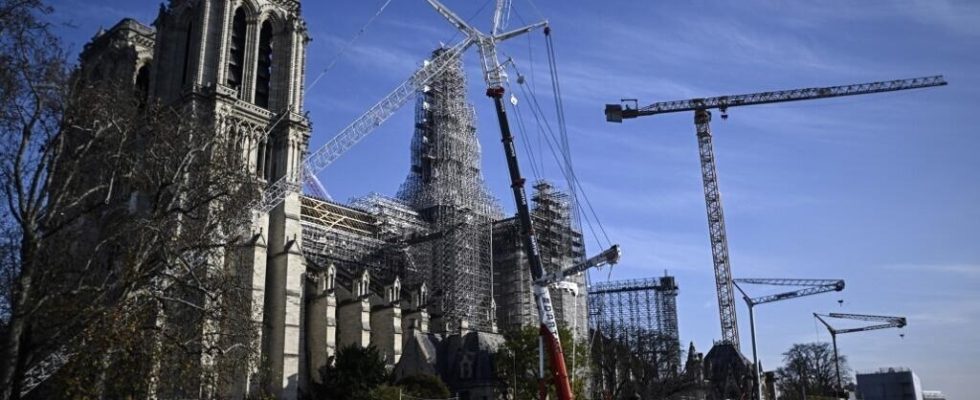Notre-Dame de Paris will open its doors in one year, to the day, on December 8, 2024. In any case, that is what the French president promised. A titanic project: more than 1000 craftsmen and a budget approaching a billion euros… Certain stages have already been reached, such as the reconstruction of the framework of the famous spire of Notre-Dame, completely destroyed during the fire of the cathedral in April 2019. Next step: cover the spire and the roof, as was done in the 19th century, that is to say with lead. A choice that is controversial for health reasons.
From its height of 96 meters, it once again rises into the Paris sky, hidden behind scaffolding. This December, the spire found its place on the roof of Notre-Dame. It is late morning, 700 Catholic seminarians are observing a time of prayer on the square.
“ We prayed in front of Notre-Dame just now, for the repair of the gutted and injured church. But above all, I was able to discover the work that is done by the craftsmen and the Companions of Duty to restore it to its original condition. It’s very touching. »
Reproduce the spire and the roof, as they were designed in the 19th centurye century by the architect Viollet-le-Duc. That is to say with lead. A controversial choice of material, supported by the French government, the authority responsible for the work.
Annie Thébaud-Mony is a researcher at INSERM, a specialist in occupational diseases and a member of the Notre-Dame lead collective. For her, this decision is unacceptable: “ The lead cover, what we call laminated lead, are sheets of lead placed one on top of the other and which permanently release lead, which will partly go into the runoff and another part will go turn to dust in the Parisian environment “.
Faster reconstruction with lead
At Notre-Dame de Paris, “ there is no health risk » replies the public establishment in charge of reconstruction. He assures: “ Lead is only used at height, away from the public, so there is no risk of ingestion “.
On the runoff side, those responsible for the site promise “ an innovative approach to environmental progress » aimed at reducing lead discharges into water. Releases which, according to a study, will be minimal. False good news retorts Annie Thébaud-Mony: “ Any lead pollution is very dangerous. It’s a poison called “without threshold”, that is to say there is no level below which it is not dangerous. We banned leaded gasoline in 2000, we banned lead pipes, it is a source of additional lead contamination “.
To cover churches, substitutes exist: copper, slate, zinc. Why did you choose lead anyway? For Jean-François Cabestan, a specialist in historical monuments and an expert on the Notre-Dame construction site, this decision responds to two issues: respect for tradition, and above all the ambition for rapid reconstruction.
“ The choice of lead is a reconstruction that was carried out while avoiding all architectural design problems. On the basis of very considerable documentation available, this was indeed not the path of wisdom, but certainly the path of efficiency. »
A bet that the government seems to have kept: the cross has just found its place on the spire. This should also be visible from the Olympic Games in 2024, dressed entirely in lead.
Read alsoWhat science is at work for Notre-Dame?
